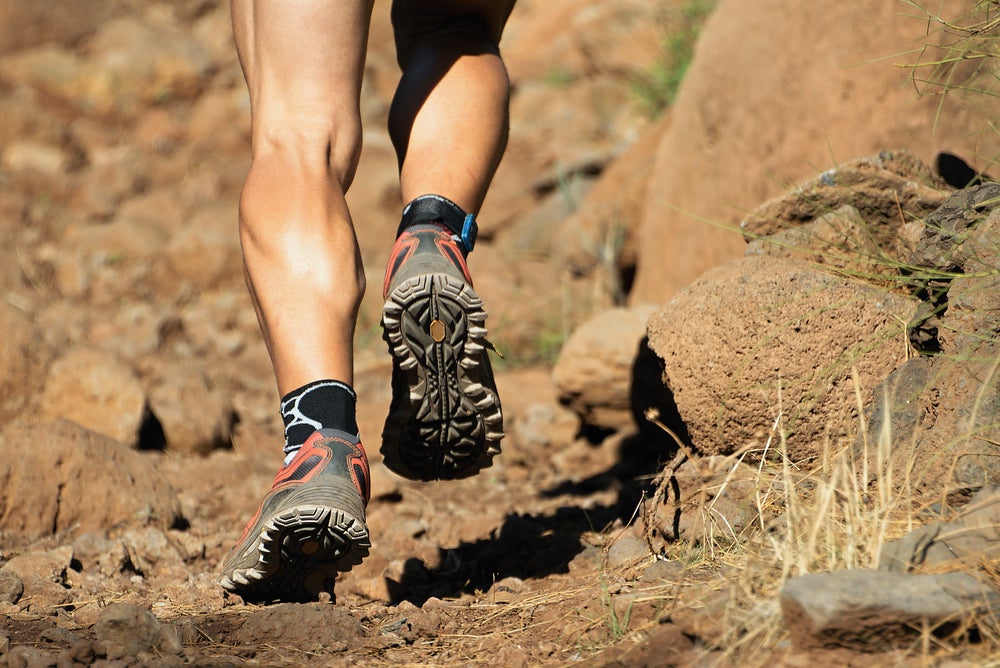4 Tips for Buying Trail Running Shoes

Picking the right shoe for running off-road is a little different than picking a high-mileage trainer or a racing flat. In addition to a proper fit, you should also consider trail terrain, weather conditions and the type of running you’ll be doing. For some expert insight, we checked in with Jorge Maravilla, a two-time national champion trail runner and the general manager of San Francisco Running Company in Mill Valley, Calif.
Trail Shoes Fit Differently
A trail shoe should fit snugly around the midfoot/arch area and provide a locked-down feeling in the heel to eliminate any lifting or shifting over uneven terrain. In the forefoot, make sure there is at least a thumb’s-width of space between the tip of your toes and the end of the shoe.
RELATED: The 21 Best Running Shoes for Every Type of Run
Cushion Depends on Preference
The amount of cushioning is a balance between how much you want to feel the trail and how much protection and softness you want under your foot. Effective cushioning reduces the impact on the body, but it’s always a great idea to have trail shoes with a variety of cushioning levels, just as we do in training on the road or track.
Trail Shoes Really are Different
You should always consider running with a trail shoe when you’re not running on pavement. They offer trail-specific protection, traction and accommodation to the varied terrain and conditions. Because road running shoes aren’t built for trails, they’ll tend to break down quicker and leave the foot exposed to sharp rocks and roots.
RELATED: Shoelace Hacks for Every Type of Running Shoe
Traction Depends on Terrain and Sole Design
A shoe with knobby lugs on the outsole will greatly aid traction on loose dirt, gravel and sloppy, wet terrain, whereas lower-profile outsole lugs are ideal for less technical terrain and smooth dirt paths. For running on trails over boulders and rocks, look for a sticky rubber outsole.
RELATED: How to Start Trail Running